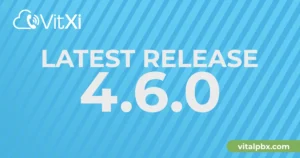The True Cost of Ownership: Is On-Prem PBX Worth It in 2025?
As businesses navigate the evolving technological landscape of 2025, communication remains the cornerstone of success. Many are re-evaluating their phone systems, and a crucial question arises: Is an on-premise Private Branch Exchange (PBX) still a viable option? While cloud solutions have gained immense popularity, understanding the true cost of ownership for an on-prem PBX is essential before dismissing it. This comprehensive guide will dissect the various financial and operational factors to help you determine if an on-premise PBX is worth the investment for your organization in 2025.
The decision isn’t just about initial purchase price; it’s about long-term value, control, and suitability for your specific business needs. Let’s delve into what owning and operating an on-premise PBX truly entails.
Understanding On-Premise PBX in the 2025 Landscape
Before we break down costs, it’s important to clarify what an on-premise PBX is and why it continues to be a consideration for many businesses, even with the allure of cloud alternatives.
What Exactly is an On-Premise PBX System?
An on-premise PBX is a telecommunications system that resides physically at your business location. You own and manage the hardware (servers, gateways, phones) and software that routes calls, manages extensions, and provides various communication features. Think of it as your private telephone network, giving you direct control over its configuration and operation.
Key components typically include:
- PBX Server: The brain of the system, running the PBX software.
- Telephony Cards/Gateways: To connect to the Public Switched Telephone Network (PSTN) via traditional phone lines or SIP trunks.
- IP Phones or Analog Phones: The physical devices users interact with.
- Network Infrastructure: Your local area network (LAN) that connects all components.
In 2025, modern on-premise PBX systems, like those powered by VitalPBX, are sophisticated IP-PBXs, leveraging Voice over IP (VoIP) technology for enhanced features and flexibility compared to older analog systems. You might find robust solutions that can integrate with various business applications, offering a rich communication experience.
Why Businesses Still Consider On-Premise PBX Solutions in 2025
Despite the cloud surge, several compelling reasons keep on-premise PBX relevant:
- Control and Customization: Businesses have full autonomy over system configuration, security protocols, and integration with other on-site applications. This level of control is paramount for organizations with unique workflows or stringent compliance needs.
- Data Security and Privacy: For industries handling sensitive data (e.g., healthcare, finance), keeping communications infrastructure in-house can offer a perceived or actual greater sense of security and control over data privacy. You’re not relying on a third-party provider’s security measures for your core call data.
- Long-Term Cost Predictability (Potentially): While initial investment is higher, once the system is paid for, ongoing costs can be lower than subscription-based cloud services, especially for stable organizations with minimal changes in user count.
- Internet Independence for Internal Calls: Internal calls within an on-premise system don’t rely on internet connectivity, ensuring communication continuity even if your internet service is down.
- Leveraging Existing Infrastructure: Businesses with significant existing network infrastructure or in-house IT expertise might find it more economical to build upon what they already have.
Deconstructing the True Cost of Ownership (TCO) for On-Prem PBX
Calculating the true cost of ownership (TCO) for an on-premise PBX in 2025 requires looking far beyond the initial invoice for hardware and software. It’s a holistic view of all direct and indirect expenses over the system’s lifespan.
Upfront Investment: Hardware, Software, and Initial Setup Costs
This is often the most significant barrier for an on-premise PBX.
- PBX Hardware: This includes the server itself, telephony interface cards (if connecting to traditional PSTN lines), gateways for SIP trunking, and potentially uninterruptible power supplies (UPS). Costs can range from a few hundred to many thousands of dollars depending on capacity and redundancy requirements.
- Handsets and Endpoints: IP phones, conference phones, and softphone licenses for each user. The price per device varies significantly based on features.
- PBX Software Licensing: While some PBX software like the community version of VitalPBX offers a robust free tier, advanced features or enterprise editions often come with licensing costs. These might be perpetual or require annual renewals for support and updates.
- Installation and Configuration: Unless you have skilled IT personnel, you’ll likely need to pay for professional installation and setup. This can include network configuration, system programming, and training. This is a critical step where expert setup can prevent future issues. For more information on robust setups, consider reading about choosing the right PBX for your business.
- Cabling and Infrastructure Upgrades: If your existing network cabling isn’t up to par (e.g., not Cat5e/6 for VoIP), you’ll need to factor in these upgrade costs.
Ongoing Operational Expenses: Maintenance, Upgrades, and IT Staff
The costs don’t stop after installation.
- Maintenance Contracts: Many businesses opt for support and maintenance contracts with their PBX vendor or a third-party provider. This covers hardware replacement, software updates, and technical support. These contracts can add a significant percentage to your annual costs.
- Software Updates and Upgrades: While some updates might be included in maintenance, major version upgrades or new feature modules could incur additional costs. Staying current is vital for security and functionality.
- IT Staff Time and Training: Your IT team will need to manage, troubleshoot, and maintain the system. This includes regular patching, monitoring, and user support. If you don’t have dedicated IT staff, you might need to hire or contract this expertise. The time spent by your existing IT staff on the PBX is an opportunity cost.
- Carrier Charges: Costs for SIP trunks or traditional phone lines (PRI/BRI) from your telecommunications provider. While not a PBX cost per se, it’s an integral part of the system’s operational expense. Understanding SIP Trunking with VitalPBX can help optimize these costs.
- Energy Consumption: Servers and related hardware consume electricity 24/7. While perhaps a minor component for smaller setups, it can add up for larger deployments.
Hidden Costs: Downtime, Scalability Limitations, and End-of-Life
These are often overlooked but can significantly impact the TCO.
- Downtime: If your on-premise PBX fails and you don’t have robust redundancy, the cost of lost business during downtime can be substantial. Repairing or replacing hardware also takes time.
- Scalability Costs and Limitations: Adding more users or lines to an on-premise system might require purchasing additional hardware licenses or even a more powerful server. Scaling down can also be inefficient as you’re left with underutilized, already-paid-for hardware.
- Security Management: While control is a plus, the responsibility for securing the system against threats like toll fraud or denial-of-service attacks falls squarely on your shoulders. This requires ongoing vigilance and potentially investment in additional security tools. VitalPBX, for instance, offers several security features to help mitigate these risks.
- Hardware End-of-Life (EOL): PBX hardware doesn’t last forever. Typically, servers and phones have a lifespan of 5-7 years. You’ll need to budget for complete system replacement or major overhauls periodically.
- Opportunity Cost: The capital tied up in an on-premise PBX could potentially be invested elsewhere in the business.
According to some industry analyses like those from TechTarget, the TCO of IT infrastructure can often be 3-5 times the initial purchase price over its lifespan when all these factors are considered.
On-Premise PBX vs. Cloud PBX: A 2025 Cost Comparison
No discussion about on-premise PBX costs is complete without comparing it to its main alternative: cloud-hosted PBX (also known as UCaaS – Unified Communications as a Service).
Cost Structures: Capital Expenditure (CapEx) vs. Operational Expenditure (OpEx)
This is the fundamental financial difference:
- On-Premise PBX (Primarily CapEx): Involves a large upfront investment in hardware and software, which is then depreciated over time. Ongoing costs are generally lower but can be unpredictable (e.g., hardware failure).
- Cloud PBX (Primarily OpEx): Involves a predictable monthly subscription fee per user. There’s minimal upfront cost, typically just for IP phones if needed. This model is often favored by businesses wanting to conserve capital and prefer predictable operational expenses.
In 2025, the choice between CapEx and OpEx often depends on a company’s financial strategy and cash flow preferences.
Scalability and Flexibility: Adapting to Business Growth
- On-Premise PBX: Scaling up often means buying more hardware, licenses, and potentially a larger server. Scaling down leaves you with unused capacity. This can be cumbersome and less agile for rapidly changing businesses.
- Cloud PBX: Highly scalable. Adding or removing users is usually a simple administrative change, with costs adjusting accordingly. This offers greater flexibility for seasonal businesses or those experiencing rapid growth or contraction.
Security and Control: Where Does On-Premise Shine (and what’s the catch)?
- On-Premise PBX: Offers maximum control over security configurations and data. You manage your own firewalls, intrusion detection, and security updates. The catch is that this responsibility entirely rests on your IT team’s expertise and diligence.
- Cloud PBX: Security is managed by the provider. Reputable providers invest heavily in enterprise-grade security, redundancy, and compliance certifications (e.g., ISO 27001, SOC 2), which might be beyond the reach of many SMBs. However, you are entrusting your communications data to a third party.
For a deeper dive into platform capabilities, you might want to explore recent updates like those in VitalPBX Version 4, which showcase how modern on-premise solutions are evolving.
Key Factors to Determine if On-Prem PBX is Worth It for Your Business in 2025
So, is an on-premise PBX worth it in 2025? The answer is: it depends entirely on your specific circumstances.
Making the Right Choice: Is an On-Premise PBX System for You in 2025?
Consider these factors carefully:
- Business Size and Growth Projections:
- Stable, larger businesses (50+ users) with predictable user counts might find the long-term TCO of an on-premise system favorable after the initial investment is recouped.
- Startups or rapidly growing/shrinking businesses may benefit more from the flexibility and scalability of cloud solutions.
- IT Infrastructure and In-House Expertise:
- Do you have a skilled IT team capable of managing and maintaining a PBX system, including security updates and troubleshooting? If yes, on-premise is more feasible.
- If IT resources are limited, the managed nature of cloud PBX is often more practical.
- Security and Compliance Requirements:
- Do you operate in a highly regulated industry (e.g., healthcare with HIPAA, finance with PCI DSS) that mandates specific data handling and storage protocols, or where physical control over data is preferred? On-premise can offer this direct control.
- However, ensure your team can actually implement and maintain these strict security measures. Sometimes, specialized cloud providers have more robust compliance certifications.
- Internet Reliability and Quality:
- While external calls always need a connection, if your internal communication is critical and your internet connection is unreliable, an on-premise PBX ensures internal calls continue to function.
- For cloud PBX, a stable, high-quality internet connection is non-negotiable.
- Desire for Customization and Integration:
- If you need deep integration with legacy on-site applications or highly specific custom call routing logic that cloud providers don’t offer, an on-premise PBX provides greater flexibility.
- Budget and Financial Model:
- Can your business absorb a significant upfront CapEx? Or is a predictable monthly OpEx model more suitable for your cash flow?
The VitalPBX Advantage: Flexible On-Premise Solutions
For businesses leaning towards on-premise, solutions like VitalPBX offer a modern, feature-rich platform. VitalPBX can be installed on your own hardware, giving you control, and it scales from small businesses to large enterprises. Its modular design allows you to choose the features you need, potentially optimizing costs. Furthermore, VitalPBX also offers options that can bridge the gap, providing flexibility that aligns with diverse business needs.
Frequently Asked Questions (FAQ) About On-Premise PBX Costs and Value in 2025
To help clarify common queries, here are answers to frequently asked questions:
Q1: What are the typical upfront costs for an on-premise PBX in 2025?
A: Upfront costs in 2025 can range from $500-$1000 per user for a comprehensive setup, including server hardware, software licenses (if applicable), IP phones, and initial installation/configuration. For a 50-user business, this could mean $25,000 to $50,000, though this can vary widely based on specific hardware choices and feature requirements. Solutions like VitalPBX installed on your own hardware can offer more cost-effective starting points.
Q2: Are there hidden costs associated with on-premise PBX systems?
A: Yes. Hidden costs can include IT staff time for ongoing management, electricity consumption, costs of potential downtime, emergency repair expenses if hardware fails outside of warranty, software upgrade fees for major new versions, and the eventual cost of system replacement after 5-7 years.
Q3: Is an on-premise PBX cheaper than a cloud PBX in the long run?
A: It can be, but not always. If a business has a stable number of users and keeps the system for 5+ years, the TCO might be lower than a cloud PBX subscription over the same period, especially if IT expertise is already in-house. However, this requires careful calculation, factoring in all the ongoing and hidden costs mentioned.
Q4: Do I absolutely need a dedicated IT team for an on-premise PBX?
A: While not always “dedicated” solely to the PBX, you need readily available IT expertise. This could be an in-house IT person or team, or a reliable IT consultant/MSP. Managing an on-premise PBX involves software updates, security patching, troubleshooting, and hardware maintenance – tasks that require technical skills.
Q5: How does an on-premise PBX handle security and compliance in 2025?
A: With an on-premise PBX, you are fully responsible for its security. This means configuring firewalls, managing user access, applying security patches, and monitoring for threats. For compliance (like HIPAA or PCI DSS), you must ensure your entire setup meets the required standards. This offers granular control but also significant responsibility.
Q6: Can I easily scale an on-premise PBX if my business grows?
A: Scaling an on-premise PBX typically involves purchasing additional hardware (e.g., expansion cards, more powerful server) and/or software licenses. While possible, it’s often less flexible and more costly per increment than scaling a cloud PBX. You need to plan for future growth when initially sizing your system.
Conclusion: Is On-Premise PBX Your Best Bet in 2025?
The decision of whether an on-premise PBX is “worth it” in 2025 is not a simple yes or no. The true cost of ownership for an on-prem PBX extends far beyond the initial price tag, encompassing ongoing maintenance, staffing, potential downtime, and eventual replacement.
For organizations that prioritize ultimate control, have specific and complex customization needs, possess robust in-house IT capabilities, and operate in environments where data sovereignty is paramount, an on-premise PBX can still be a strategically sound and potentially cost-effective solution in the long term. The predictability of owning the asset, once paid off, can be appealing.
However, businesses must meticulously calculate the TCO, weighing it against the flexibility, scalability, and often lower upfront costs of cloud-based alternatives. Factors like rapid growth, limited IT resources, or a preference for OpEx financial models might steer you towards the cloud.
Ultimately, the “worth” of an on-premise PBX in 2025 hinges on a thorough assessment of your unique business requirements, technical capacity, and long-term strategic goals.
Ready to explore a powerful and flexible on-premise PBX solution?
VitalPBX offers a robust platform that you can host on your own terms. Download VitalPBX today and discover how it can empower your business communications with control and rich features. Take the first step towards owning your communication infrastructure.




